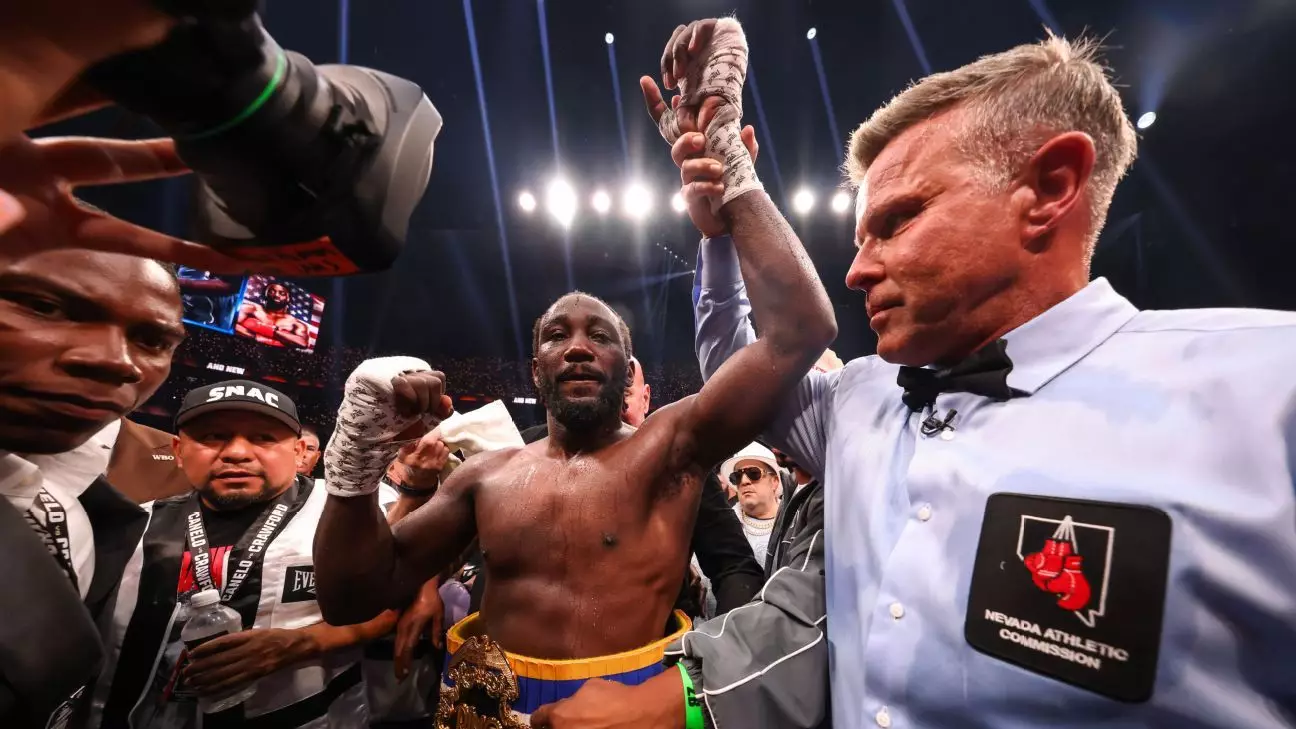In recent weeks, the world of combat sports has witnessed an unprecedented collision of disciplines, personalities, and egos. At the forefront is boxer Terence Crawford, fresh off his historic victory in becoming the undisputed super middleweight champion after overpowering Canelo Alvarez. But just as fans start to savor this triumph, a new challenger emerges from the MMA arena—Ilia Topuria, a rising UFC lightweight star, who has his sights set on crossing over into boxing’s elite echelon. This confrontation is not simply about a potential fight; it symbolizes a broader cultural clash, a contest of legitimacy and influence that pervades modern combat sports.
What makes this debacle particularly intriguing isn’t just the desire of a UFC fighter to step into boxing’s biggest stage but the way social media fuels this rivalry. Topuria’s bold claim to knock out Crawford if they ever share a ring exemplifies the audacious spirit of MMA fighters eyeing boxing glory. His choice to walk into the octagon to a famous Mexican song, “Canción del Mariachi,” further intensifies the cultural and emotional undertones of this burgeoning rivalry. Yet, Crawford’s dismissive response—calling Topuria a “clout chaser”—serves as a reminder that, in the realm of combat sports, legitimacy is often measured by action, not words.
However, Crawford’s critique reveals another layer of the problem: the perception of MMA fighters attempting to jump the queue in boxing. His skepticism about Topuria’s genuine desire and his own unfamiliarity with Topuria’s fight record highlight how deeply entrenched the divide remains between these disciplines. Despite the financial allure of crossover bouts, Crawford questions the true value of such a fight, especially in the absence of a competitive pedigree comparable to a fight like Mayweather versus McGregor. His comments underscore that, at least from his perspective, boxing doesn’t need an MMA convert to stay relevant; it commands its own legitimacy, rooted in tradition and skill.
Furthermore, Crawford’s blunt dismissal signals a broader debate about identity and respect in combat sports. When a UFC champion, who’s known primarily for grappling and striking in the octagon, suddenly declares interest in boxing’s ring, it challenges the hierarchy of combat. Is MMA fighting truly equivalent? Or is it merely a spectacle designed for quick gains and social media notoriety? Crawford’s skepticism suggests that, for many boxing purists, MMA fighters often lack the technical mastery and discipline that have historically distinguished boxing champions.
But this feud also reveals how social media has transformed the landscape, turning what once was a simple fighter’s challenge into a national spectacle of ego, culture, and perceived credibility. Topuria’s provocative statements and theatrical gestures—like walking out to a song associated with his MMA persona—serve as a calculated attempt to position himself as a serious contender. His readiness to “teach Crawford how to dance in the ring” is less about sport and more about spectacle—a marketing move that draws headlines and fuels an evolving cultural narrative: that fighters from different worlds can, and perhaps should, collide for maximum entertainment and financial gain.
Crawford’s dismissiveness, however, is rooted in a firm belief that boxing’s history and legitimacy should not be compromised by superficial crossovers driven by hype. His skepticism isn’t just about Topuria’s skills but about preserving the integrity of boxing as a sport built on technical mastery and tradition. For Crawford, fighting MMA’s rising star would be more about clout-chasing than athletic achievement, and he’s not interested in playing along. His critique serves as a warning to fighters who chase quick fame by jumping into new domains—respect is earned over years, not moments on Instagram.
In essence, this rivalry encapsulates a larger conversation about the future of combat sports. Will crossover fights become the norm, diluting the discipline and craft-centered ethos of boxing? Or can they serve as meaningful contests that elevate both disciplines, fostering mutual respect? For now, Crawford’s skepticism and Topuria’s bravado illustrate that the battle for legitimacy is as fierce outside the ring as it is within. It’s a clash of cultures, skill sets, and visions for what combat sports should represent—an ongoing debate that might shape the next chapter of martial arts history.


Leave a Reply